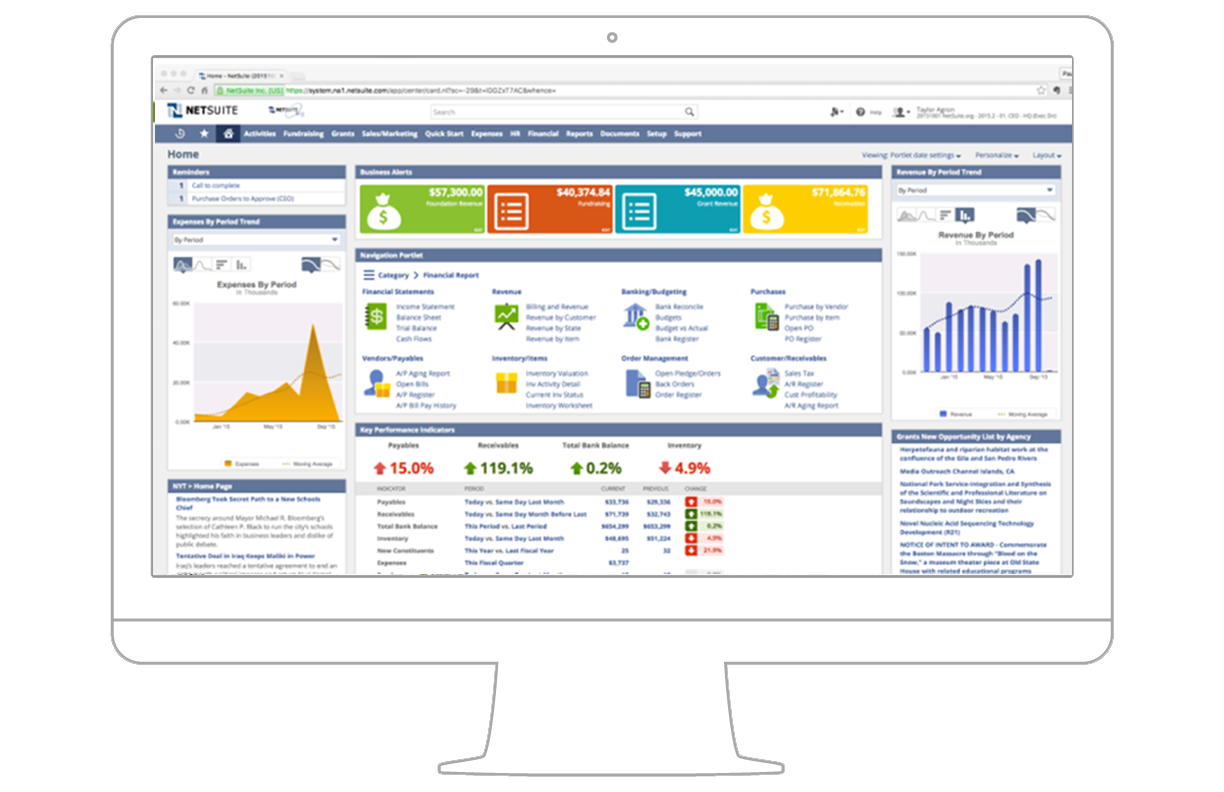
Netsuite: Complete Buyer's Guide
Comprehensive ERP solution for ecommerce businesses
NetSuite represents the comprehensive ERP solution for established ecommerce businesses requiring unified inventory management with AI-driven predictive capabilities across multiple channels and locations.
Market Position & Maturity
Market Standing
NetSuite occupies a dominant position in the mid-market ERP space, serving as Oracle's cloud ERP platform with substantial market presence and enterprise backing [57].
Company Maturity
The platform's market maturity reflects years of development and refinement, with thousands of implementations across diverse industries providing extensive real-world validation of capabilities and reliability.
Growth Trajectory
Growth trajectory reflects steady expansion in cloud ERP adoption, with NetSuite benefiting from market trends toward unified platforms rather than best-of-breed point solutions.
Industry Recognition
Market recognition includes consistent placement in analyst reports and industry evaluations, though specific rankings require verification from current sources.
Strategic Partnerships
The platform's strategic partnerships with integration providers like Celigo and implementation specialists enable complex deployments while maintaining vendor ecosystem support [48][49].
Longevity Assessment
Long-term viability appears strong given Oracle's continued investment in cloud ERP development and NetSuite's established market position.
Proof of Capabilities
Customer Evidence
Perfect Keto achieved transformative results including 67% reduction in financial closing time and 15 days per month reclaimed for strategic analysis through NetSuite deployment with Celigo integration [48][50].
Quantified Outcomes
RedBuilt documented 158% ROI within six months primarily through reduced manual data entry and operational efficiency gains [51].
Case Study Analysis
Eyebobs eliminated costly custom integration systems, achieving $200,000 annual savings through automated order processing capabilities [49].
Market Validation
NetSuite's customer base includes thousands of implementations across retail, manufacturing, and service industries, demonstrating proven deployment capabilities across diverse business scenarios.
Competitive Wins
Competitive wins emerge in scenarios requiring comprehensive ERP functionality rather than specialized inventory management.
Reference Customers
Reference customers span established ecommerce operations with annual revenues between $50M-$500M, validating NetSuite's positioning in the mid-market to enterprise segment [55][57].
AI Technology
NetSuite's technical foundation centers on unified ERP architecture that integrates AI capabilities natively across finance, inventory, and customer management modules rather than relying on bolt-on solutions [46][59].
Architecture
The platform's AI-driven predictive analytics leverage historical sales data, seasonal trends, and external factors to generate automated replenishment recommendations [40][42].
Primary Competitors
Primary competitors include enterprise ERP platforms like SAP, specialized inventory solutions like Zoho Inventory and Prediko, and comprehensive business platforms targeting similar market segments [3][18][19][57].
Competitive Advantages
Competitive advantages center on NetSuite's unified data architecture enabling cross-functional analytics across finance, inventory, and customer management modules [46][59].
Market Positioning
Market positioning context shows NetSuite competing in the intersection between comprehensive ERP functionality and specialized inventory management.
Win/Loss Scenarios
Win scenarios favor NetSuite when organizations require unified finance and inventory management with AI capabilities, particularly those operating across multiple channels and locations.
Key Features

Pros & Cons
Use Cases
Integrations
Pricing
Featured In Articles
How We Researched This Guide
About This Guide: This comprehensive analysis is based on extensive competitive intelligence and real-world implementation data from leading AI vendors. StayModern updates this guide quarterly to reflect market developments and vendor performance changes.
59+ verified sources per analysis including official documentation, customer reviews, analyst reports, and industry publications.
- • Vendor documentation & whitepapers
- • Customer testimonials & case studies
- • Third-party analyst assessments
- • Industry benchmarking reports
Standardized assessment framework across 8 key dimensions for objective comparison.
- • Technology capabilities & architecture
- • Market position & customer evidence
- • Implementation experience & support
- • Pricing value & competitive position
Research is refreshed every 90 days to capture market changes and new vendor capabilities.
- • New product releases & features
- • Market positioning changes
- • Customer feedback integration
- • Competitive landscape shifts
Every claim is source-linked with direct citations to original materials for verification.
- • Clickable citation links
- • Original source attribution
- • Date stamps for currency
- • Quality score validation
Analysis follows systematic research protocols with consistent evaluation frameworks.
- • Standardized assessment criteria
- • Multi-source verification process
- • Consistent evaluation methodology
- • Quality assurance protocols
Buyer-focused analysis with transparent methodology and factual accuracy commitment.
- • Objective comparative analysis
- • Transparent research methodology
- • Factual accuracy commitment
- • Continuous quality improvement
Quality Commitment: If you find any inaccuracies in our analysis on this page, please contact us at research@staymodern.ai. We're committed to maintaining the highest standards of research integrity and will investigate and correct any issues promptly.